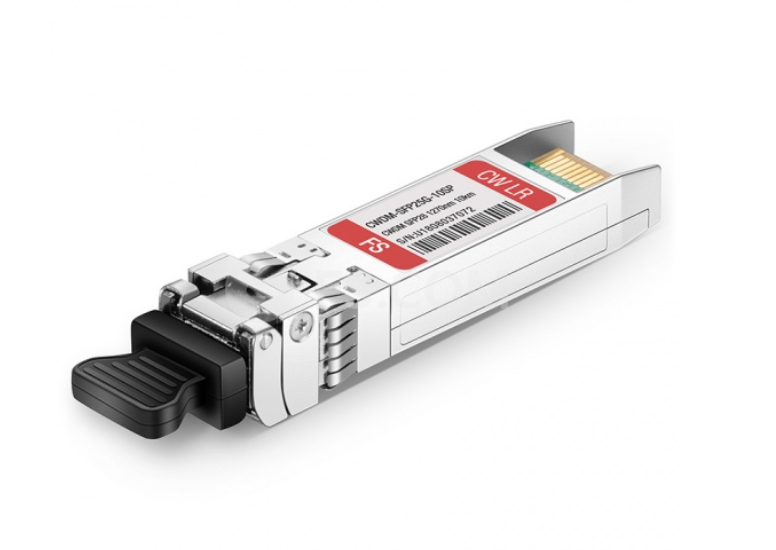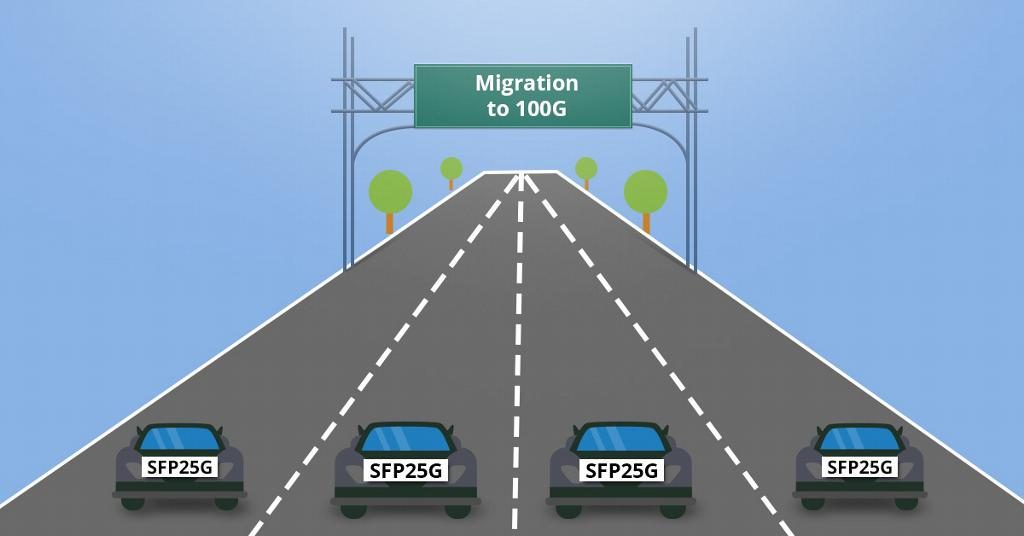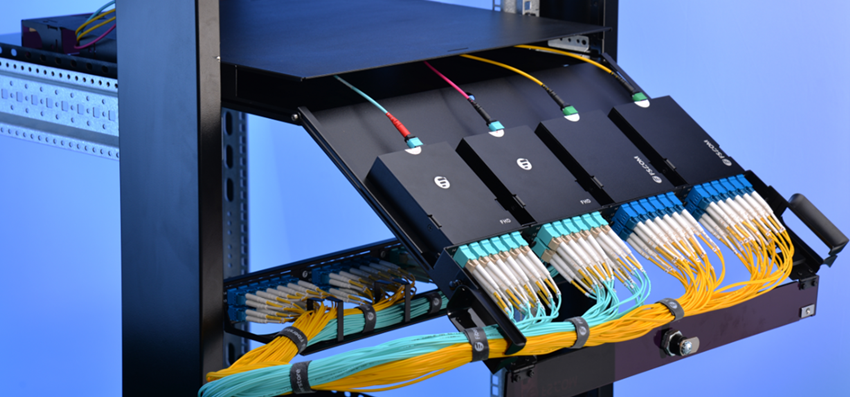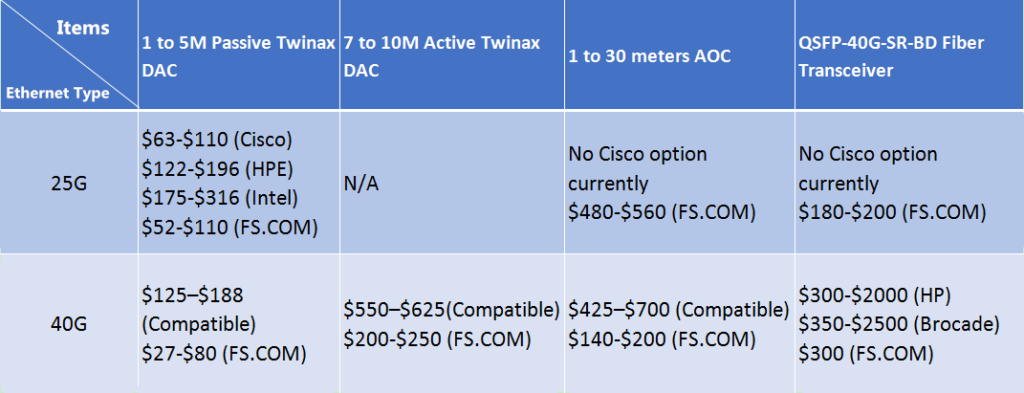With the ever-increasing demands for faster speed and higher density, SFP transceiver modules have undergone several generations of upgrade for signal speed capability and port density updates, from the original SFP to SFP+ and then to the new SFP28 type. 10GbE has encountered bottlenecks due to the surge in demand for high bandwidth. 25G Ethernet becomes the new standard that provides significant density, cost, and power advantages for server switching links. Today we will come to know the CWDM SFP28 with 25G Gigabit Ethernet.
What Is 25G CWDM SFP28?
CWDM SFP28 transceiver operates on four wavelengths (1270, 1290, 1310, and 1330 nm), which combine to be suitable for 100G in data center networks through course wavelength division multiplexing (CWDM). It is an enhanced version of SFP+ designed for 25G signal transmission. The maximum reach is 10 kilometers. The physical structure of the SFP28 is the same as the popular SFP module and SFP+ module, but the electrical interface is upgraded to 25Gbps per channel. The optical connection of CWDM SFP28 is duplex LC fiber patch cables, and the CWDM SFP28 shall be backward compatible with the traditional 10G SFP + pluggable. 25G CWDM SFP28 is a dual directional device with a transmitter, a receiver and a control management interface (2-wire interface) in the same physical package. The 2-wire interface is used for serial ID, digital diagnostics and module control functions. This module provides very high functionality and integration and is accessible via a two-wire serial interface.

What Is the Difference Between CWDM SFP28 and CWDM SFP+?
We know that SFP+ is made to operate at 10Gb/s. SFP28 uses the same common form factor as SFP+, but the electrical interface is upgraded to 25Gbps per channel. CWDM SFP+ transceiver often operates at a nominal wavelength of CWDM wavelength. To be specific, CWDM SFP+ transceiver can support 18 wavelengths from 1270nm to 1610nm, and its transmission distance is from 20km to 80km. While CWDM SFP28 has four main wavelengths of 1270nm, 1290nm, 1310nm, and 1330nm. And its maximum transmission distance is 10km. Compared to SFP+ solutions, SFP28 has higher bandwidth, superior impedance control, and less crosstalk. A report once said the price of per unit of 10G bandwidth for 25G server Ethernet adapters is much lower. 25G SFP28 provides 2.5 times the bandwidth, but the price is not 2.5 times. All in all, the main advantages of SFP28 over SFP+ can be summarized into two points: lower cost and higher bandwidth.
Advantages of Using 25G CWDM SFP28
Compared to 4G, the spectrum bandwidth used by 5G has increased rapidly. 4G uses a maximum spectrum bandwidth of 20MHz, while 5G low-frequency band uses 100MHz bandwidth, and 5G high-frequency band (millimeter wave) uses 800MHz bandwidth with an upper limit of 1GHz. At present, there is still some difficulty in data processing and transmission of 5G high-frequency band (millimeter wave) and large bandwidth. Considering the smooth evolution of 5G equipment and the development of the industry chain, 25G CWDM SFP28 solution can well solve the current 5G millimeter wave pre-transmission problem. In this case, one 100G QSFP28 optical module is used on the antenna side and four 25G CWDM SFP28 optical modules are used on the baseband side. The construction of a 5G millimeter wave pre-transmission bearer network can be completed with only one MUX/DeMUX bridge connection. There is no need for devices to add an additional shunt function to perform rate matching on both ends. In all, 25G CWDM SFP28 can cost-effectively upgrade network bandwidth to support next-generation 50G (2x25G ), 100G (4X25G) and storage solutions for cloud and web-scale data center environments.
Conclusion
SFP28 assembly solution supports a new generation of high-density 25G Ethernet switches that facilitate server connectivity in data centers and provide a cost-effective upgrade path for enterprises deploying 10G Ethernet links in the future. If you are considering to build a 25 Gigabit Ethernet network, you can visit FS.COM, which offers a variety of CWDM SFP28 with famous compatible brands.
Related Articles:
Taking an In-depth Look at 25G SFP28
Decoding 100G QSFP28 Transceiver



